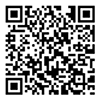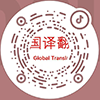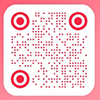Specific Solutions
Operation Manual Translation: Key to Ensuring Global User Understanding and Usage
As globalization continues to accelerate, more and more companies and brands are expanding their products and services into international markets. To ensure that users from different countries and regions can correctly use their products, operation manual translation has become an indispensable part of the process. Accurate translation of operation manuals not only improves user experience but also reduces the risks and losses caused by misoperation. This article explores the importance of operation manual translation, the challenges involved, and how to ensure high-quality translation.
The Importance of Operation Manual Translation
An operation manual typically includes usage instructions, maintenance guidelines, safety operation regulations, and troubleshooting information for a product or device. For manufacturers, ensuring that the operation manual is accurately understood by global users is crucial. This affects not only the user experience but also the product’s market acceptance and brand reputation.
1. Enhancing User Experience
Users rely on the operation manual to understand how to properly operate the device or complete a task. If the translation is inaccurate, users may make incorrect operations due to misunderstanding the instructions, leading to equipment damage or even personal injury. Accurate translation helps users grasp how to use the product quickly and efficiently, improving user satisfaction.
2. Reducing Safety Risks
Operation manuals typically include safety precautions, warning signs, and guidelines for troubleshooting. For products in high-risk industries (such as medical devices or industrial equipment), poor translation may lead to significant safety hazards. Ensuring the accuracy of the manual’s translation can effectively reduce the risk of accidents during use and protect both users and the company.
3. Compliance Requirements
Different countries and regions have varying legal and compliance requirements for product instructions and operation manuals. Operation manual translation not only needs to ensure language accuracy but also comply with local regulations. For example, product safety standards differ across Europe, the U.S., and Asia, and translators must consider these differences to ensure the manual meets the requirements of the local market.
Challenges in Operation Manual Translation
Translating an operation manual is not just a simple language conversion; it requires translators to have both linguistic skills and an understanding of the product or device’s functions, usage methods, and industry standards. Below are some common challenges in operation manual translation:
1. Accurate Translation of Technical Terminology
Operation manuals often contain a significant amount of specialized terminology related to product design, technical parameters, and operational procedures. There may not be exact equivalents for these technical terms in other languages, and translators need to ensure accuracy. If terms are mistranslated, it could lead to misunderstandings or errors in operation, or even legal risks. Therefore, translators need not only to be fluent in the language but also to have relevant domain knowledge.
2. Cultural and Linguistic Differences
Cultural and linguistic differences between countries and regions can impact the translation of operation manuals. For example, certain expressions that are commonly used in one culture may not be applicable or may be misleading in another language. Therefore, the translation must consider the cultural context of the target language, ensuring that the manual’s content is clearly understood in different cultural settings.
3. Adapting to Local Regulations and Standards
Products sold in different countries may be subject to different legal and safety standards. When translating, the operation manual must comply with local regulations and provide appropriate safety warnings and operating instructions. Consumer protection laws, product safety regulations, and certification standards vary by country, so translators must ensure that all relevant information is accurately conveyed.


















